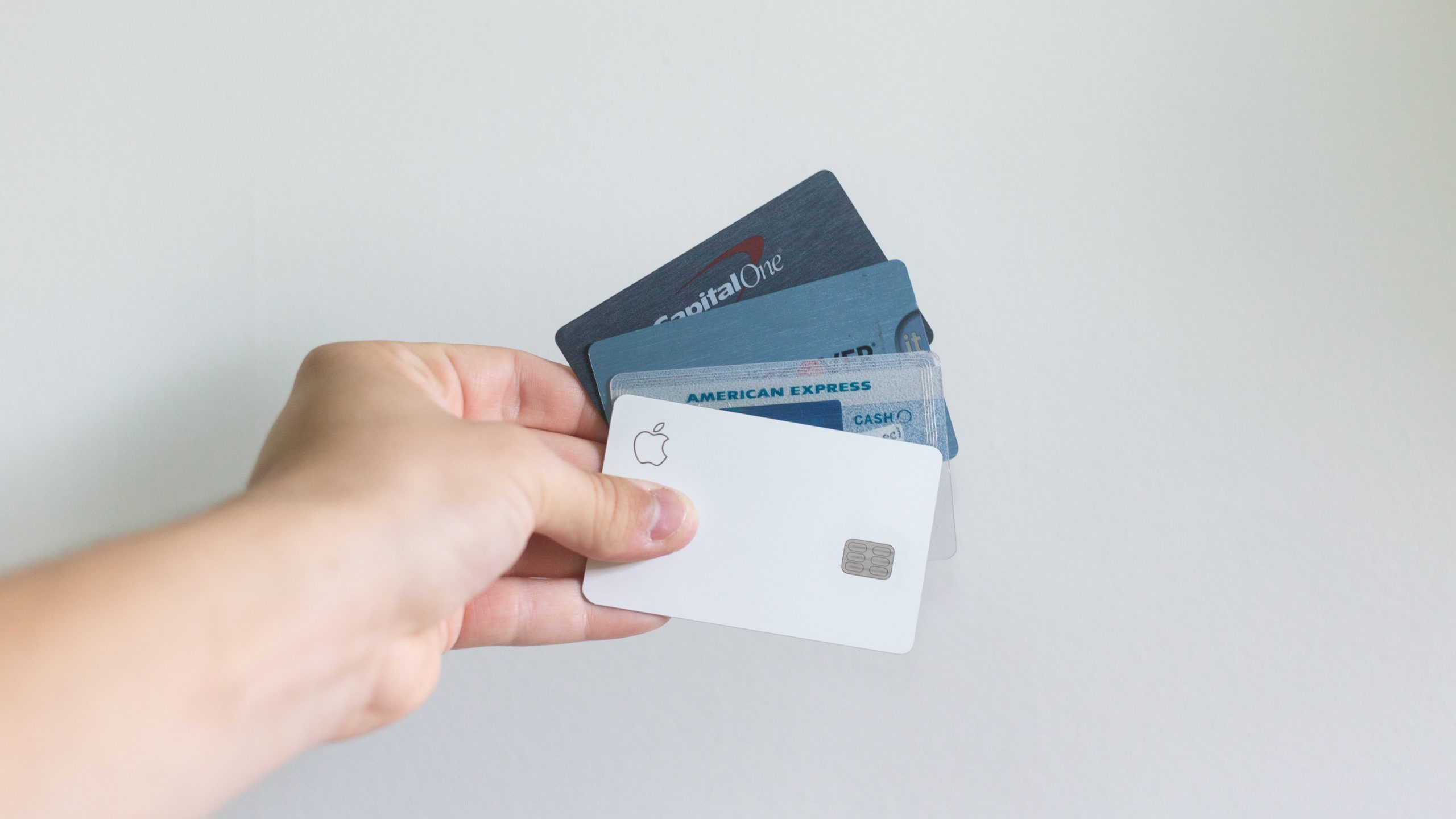

How to live below your means: Focus on these 2 things
Live below your means and you have the best chance to reach financial freedom. In fact, it’s the biggest predictor of your financial success.
What stops most families from getting there?
It’s not an inability to stick to a budget, it’s the thinking that you have to commit to frugal living and sacrifice in order to make it happen.
But we can strike a balance between living the life we want to live while also reaching financial independence by focusing on the decisions you make with 2 kinds of spending.
When you do that, you can live below your means while still enjoying the lifestyle you want.
Table of Contents
What is living below your means?
Living below your means is when you spend less than what you make.
In other words, you have money left over at the end of the month. You’re not living paycheck to paycheck. You’re not having to go into more debt to pay for your living expenses.
Why is this important?
One client said it perfectly, “Spending money is like transferring your wealth to someone else.” That’s exactly right.
Money that is spent can’t go towards building your net worth. Once it’s out the door, it’s not there to go towards saving money, investing or paying off debt.
Living below your means is saying yes to having money in the future.
The key question to ask is if spending this money now is more important than achieving the short and long term financial goals I want to reach?
Benefits of living below your means

There’s no question that you will have a brighter financial future when you live below your means. But there are other benefits in life that come from it too.
Stronger relationships
How much stress is there in your marriage because of your financial situation? How much anxiety comes from feeling like you’re financially behind, in debt, and don’t have enough money in your bank account?
With that in mind, think about this:
How would your relationship with your spouse and with your kids change if those financial stressors were removed? Really take a moment and think about that future.
When you’re in control of your money and working on it together, you will have a stronger marriage and better relationships with your kids.
Less stress in your life
This may seem counterintuitive to anyone who believes in retail therapy, but living below your means can actually reduce your stress.
The temporary high of the new flashy object goes away when the bill comes, and you experience the stress of trying to juggle your bills to match when you get paid. That’s no fun at all.
I’ve worked with clients on it, and they often regret the purchases in retrospect. They wish they had made different choices in the past.
Anticipation of buying something in the future creates excitement
How excited were you the last time you planned a vacation even if it was 3 to 6 months away? How excited were you the week before you were scheduled to leave?
This is called the anticipation period and it’s pretty awesome. It’s that amazing feeling you have when you know something great is coming in the future.
Yes it’s true, studies show that planning in advance actually enhances the experience at the time of the event but also the time leading up to it.
In other words, buying what you want when you want it (instant gratification) gives a person the temporary great feeling then a let down when it’s all over.
Conversely, saving up to buy something or taking a vacation provides these awesome endorphin popping feelings in the time leading up to it as well.
Plus, studies show that there is actually greater fulfillment in working towards something and earning it vs just getting it quickly without much effort.
Live below your means and reach your financial goals to feel truly accomplished, fulfilled, and happier.
(If you want to learn more about this, check out Dollars & Sense by Dan Ariely.)
Reach your financial goals
If you spend all of your income (or more) each month, there is absolutely no way you can achieve your long term goals.
Think about it, you can have the best financial plan in the history of financial planning. But unless you have the money left over to put towards it, there’s really no point.
The #1 key to reaching your financial goals and having a solid financial future is having money left over at the end of the month. That comes from living below your means. Period, the end.
More career flexibility
It’s always better if you can make more money, but it’s not the be-all-end-all. More money doesn’t lead to job satisfaction.
In fact, living above your means can create significant job stress and the pressure to jump to a new higher paying job even if the quality of life is much worse and it’s not something you want to do.
When you live below your means, you can make more rational decisions about what career you want to carve out for yourself, because you have a cushion between your income and your spending.
You can be patient and wait for the right opportunity, the one that will advance your career on your terms and provide you with the quality of life you’re looking for. Maybe it gives you the cushion to become self-employed if that’s of interest to you.
(Side note: If you’d like to quit your job and start your own business, I highly recommend talking to Goli Kalkhoran from Lessons from a Quitter).
How to live below your means

I’m a big believer in making things simple.
I could talk about budgeting for beginners or list creative ways to save money when talking about how to live below your means.
Don’t get me wrong, creating a budget is important. I mean, hey, I’m the Family Budget Expert!
But ultimately, you only need to do 2 things well if you want to live below your means:
- Keep major purchases reasonable.
- Track how often you spend money each month.
Let’s walk through these.
Keep major purchases reasonable
You want to know how to live below your means? It starts by understanding how much you should spend on the big ticket items you buy – house, car, home improvement projects.
These end up being large percentages of your monthly expenses.
Buying a home
For example, a mortgage payment for the typical family is 20-40% of income.
Think about that range for a moment.
This one financial decision can either eat up 20% or 40% of your budget. This one decision has a major impact on your family finances for years and years.
If you keep your home purchase price to 2-3x your household income, you should be ok in the long run.
Forget about what the bank will lend you. Their mortgage calculation works off of gross income, but you need to be thinking about take home pay.
Buying a car
Cars on the other hand are the biggest thing we buy that goes down in value over time, so we need to be careful here. Also, auto dealerships are masters at letting you feel comfortable leaving the lot with a more expensive car than you originally intended.
A new car will lose 20% of it’s value within the first year, so you’re paying $1 today for something that will be worth $0.80 in 12 months. Car leases aren’t great either because you’re basically renting a car and are committing to perpetual car payments.
Some experts say to keep the value of your cars to 50% or less of your household income. Others say that the payment should be no more than 10% of your take home pay. Either way, minimize what you spend on cars if you can.
Home improvement
Home improvement projects can get out of hand in a hurry. Often they cost at least 25% more than the estimate and take longer to complete.
Many justify this saying that it increases the home value. That may be true, but it’s not dollar for dollar in most housing markets.
Think of home improvements as an expense and not an investment. If you want to spend money on making your house more functional for your family, that’s great! Go for it! But just know that taking out a home equity loan or HELOC is an extra payment where you won’t get relief until you sell the house.
Major purchases are hard to reverse
Paying too much for these big ticket items makes it harder to invest or pay off debt since you’re locking up a big chunk of your monthly spending.
Making reasonable major purchases is important not only because they are a big part of your budget, but these are fixed expenses, and they’re costly to get out of.
With cars, it’s not uncommon to sell a car when it’s worth less than what you owe. That’s a tough situation to be in. If you want to sell a house, you may have to pay 5 or 6% in realtor fees to make it happen. That’s a big hit too.
Living beneath your means is easier said than done. People often find themselves spending too much money on a car or being house poor. But here are a couple tricks that help frame it differently.
Think as if you’re paying 100% cash
Monthly payments get all sorts of people in trouble…except the banks.
Let’s start with cars. It used to be that the terms on auto loans were 36 to 48 months. Now they’re 5, 6, and even 7 year terms.
What does that mean? The monthly payment on a $20,000 car with a 4 year loan term is about the same as a $35,000 car on a 7 year loan term. The difference? You think you can afford twice the car and you take on almost twice the debt.
Think about if you were to pay cash for a car and you had to lay down either $20,000 or $35,000 to walk off the lot with it. Doesn’t that change your perspective?
Let’s take it one step further because big numbers can really mess without thinking.
Would you rather pay $35,000 for a new car or would you rather spend $20,000 on a used car and have an extra $15,000 to put toward something else (like 10 nice vacations over the next 5 years, a home improvement project, pay off credit cards and fully fund your emergency fund).
Reframe the difference in cost between your major purchase decisions and ask yourself, “What else would I do if I had that kind of money?”
Use the 125% rule for your house, home improvement, and vehicle purchases.
Mortgage rates are near record lows which means that means you can “afford” more house than ever for the same monthly mortgage payment.
Anyone who has owned a house can tell you that the cost of homeownership goes well beyond the mortgage payment.
You have to fix anything that goes wrong and maintaining a home can get expensive. Some of the expenses are monthly while others are lump sum payments.
That combined with the fact that banks are wrong in how much house you can afford. If you borrow what they say you can, you could end up house poor once home maintenance comes into play.
I have a rule called the 125% Rule when it comes to buying a house. Pull out the calculator on your phone, take a look at the projected mortgage payment, and multiply it by 1.25 (125%). Can you afford that payment without flinching or is it a stretch?
Do the same with the down payment. Take the amount you are planning to save for a down payment, and multiply it by 1.25 also.
Why do this too? How many people do you know that move into a new house and spend $0 on any updates, furniture, or redecorating? That costs money too so you’ll need to have extra cash on hand in order to do the work you want without going further into debt.
Home improvement projects often go over budget so too, so bake in an extra 25% to see if you can afford it.
Use this when buying a car too because you’ll have auto maintenance that needs to be done as well.
Keeping your major purchases within reasons gives you the best chance to live below your means. Think about it as if you were spending 100% cash and reframe the difference in cost between your two options to see what else you’d rather do with that money.
Track how OFTEN you spend money
When I work with clients, the big ticket purchases are easy to see. They show up as a big lump sum or as fixed expenses. These are the first reasons that come up as to why they’re living paycheck to paycheck or getting further into debt.
But the day-to-day spending is often a big contributor to that as well.
You probably think I’m going to start by saying they should work on the family budget or track how much they’re spending on a monthly basis. But I’m not.
Let’s focus on something that is much easier to track and change spending habits. Let’s look at how often you spend money.
I’m referring to the number of lines on your credit card statement or bank statement, how many times you send money to someone else on Venmo. These things add up over time. They can also be easily changed since they are usually forms of discretionary expenses or flexible spending.
In this step, we’re not totaling up the dollars spent. We’re counting how many times we spent.
Use a budgeting app to make it easy to track
The easiest way to see this is to use a budgeting app that has all of your spending in one place. This includes your regular bills and fixed expenses, but also the one-off purchases. You can also literally count the line items on your statements too.
If a family has about 100 or less transactions in a month, that’s pretty good. It’s about 3 swipes, online purchases, autopays per day on average.
But if we get up to 150 per month or more, then there’s some work that can be done to cut back spending. After all, that’s spending 5x per day or more. If spending is above 200 transactions per month, then we really need to dive in here.
Count how many times you spend each day
When I work with families, one of the exercises we work on is to forget about keeping track of how much is spent each day, and to focus on how many times each day they spend money.
Spend money 2-4x per day. If you always get your morning coffee, that’s 1. If you know you’re ordering in tonight, that’s 2. After that, you get 1-2 more that day. This is so much easier to track and budget.
What we’re doing here is working on your spending habits. Making you aware of how often you spend money each day then giving you a simple framework to track and improve.
This is a much easier method to track during the day and can lead to a 25% or more reduction in daily spending without much effort and without feeling deprived.
Two Simple Ways to Live Below Your Means
Like I said, it doesn’t have to be complicated.
Make sure your big ticket items don’t eat up too much of your budget and focus on how often you spend money.
These principles will keep your personal finances in solid shape and help you live below your means without much effort.
How to start living below your means

It’s easy to ramp up lifestyle, but it’s darn hard to cut back.
No matter your starting point, there’s a way to get there. Here are a few parting tips:
The 50/50 Rule
As your income grows, you get a bonus, a tax refund, a big gift, it’s easy to want to spend it all (and sometimes more). We call that lifestyle creep.
But to avoid doing that, take at least half of it and add it to what you’re doing to build your net worth.
For example, if you get a $2,000 bonus, take $1,000 to pay off debt and take the other $1,000 to spend it on something you want. That way, you’re building net worth and increasing your lifestyle responsibly at the same time.
That’s what The 50/50 Rule is all about.
Track your spending
The first step to live below your means is to see if you are or aren’t in the first place. Believe it or not, most people wildly underestimate their spending.
Don’t be like that. Get the facts by tracking your spending. This is the #1 financial habit to set up and get things going, because it equips you with the knowledge to make changes.
Create a Family Budget
The household budget is important, because you can put parameters around your spending, and track what you want to improve.
Create a family budget only after you track and examine your spending so that you can set a realistic yet simple budget that will work for you and your family.
Work together as a couple
Success comes only when you’re on the same page.
Sure one of you might be the frugal numbers person, but that doesn’t mean that person should have 100% control and that the other spouse isn’t brought into the conversation.
Trust me on this one. Whether you’re doing the budget on your own because your spouse doesn’t want to be involved or because you don’t want them to be involved, working together will lead to success and a happier marriage.
Bring your spouse in to discuss it. Show them the numbers and get agreement.
Need help to figure out how to live below your means?
If you feel like you’re trapped and not sure what to do, if you feel like you’re behind financially, if you’re not sure how to get on the same page, I’m here to help. This is what Family Budget Expert is all about.
I work with families all the time who are living above their means or living paycheck-to-paycheck even though they know they don’t have to.
There are many ways I can help!
If you want help, but aren’t ready to talk,
1 Comment
Leave a Reply
You must be logged in to post a comment.





I am so grateful for your blog post. Really thank you! Keep writing. Ronnica Kurtis Woll